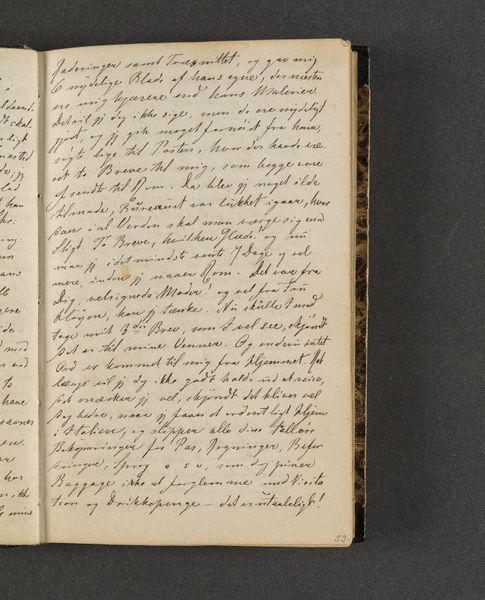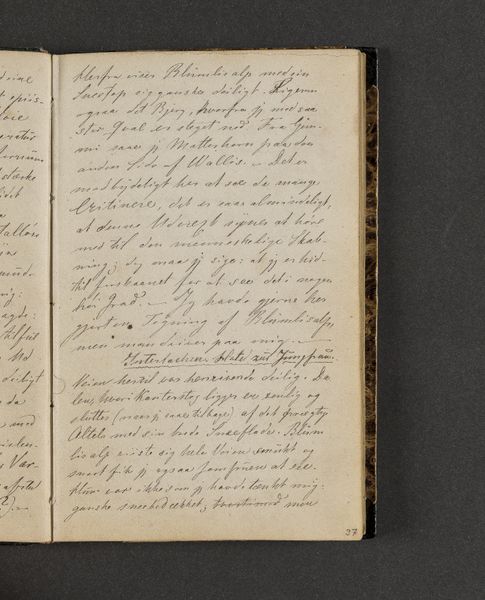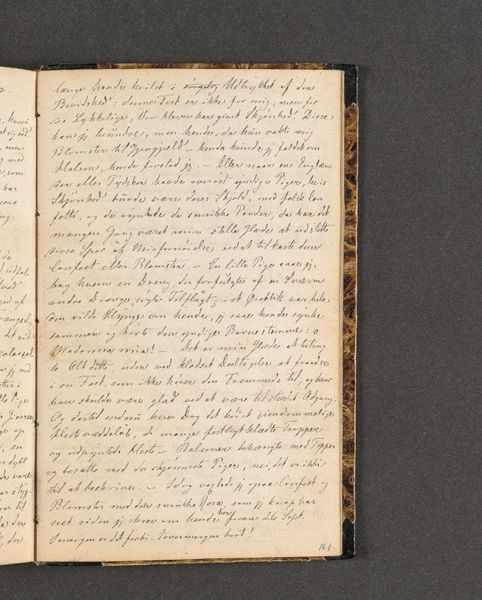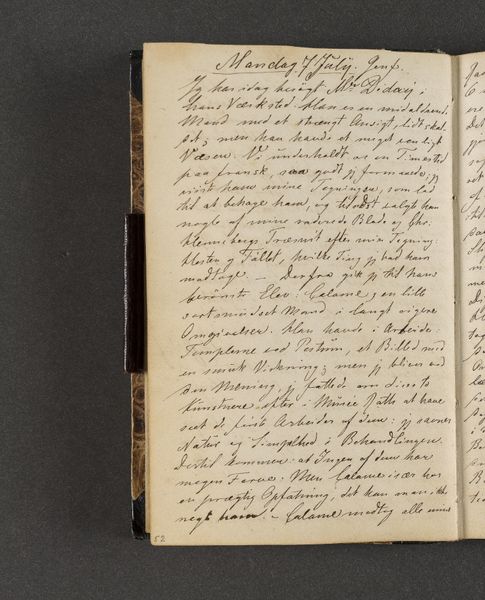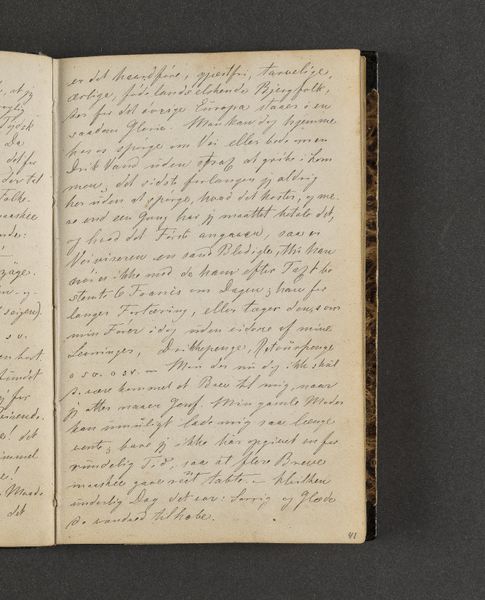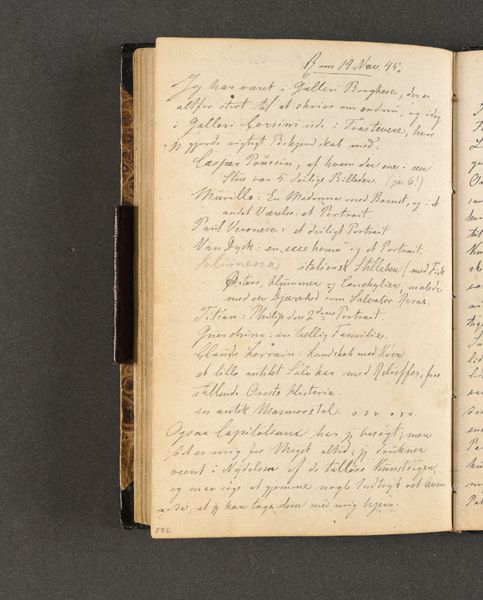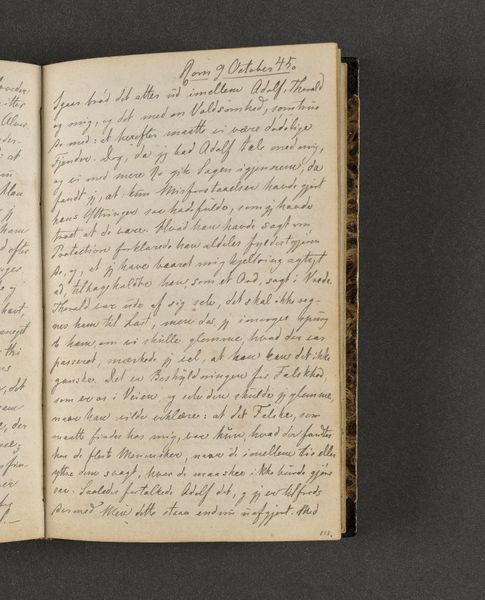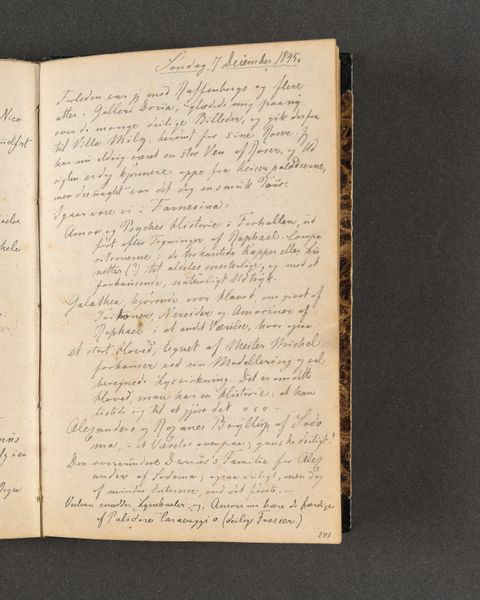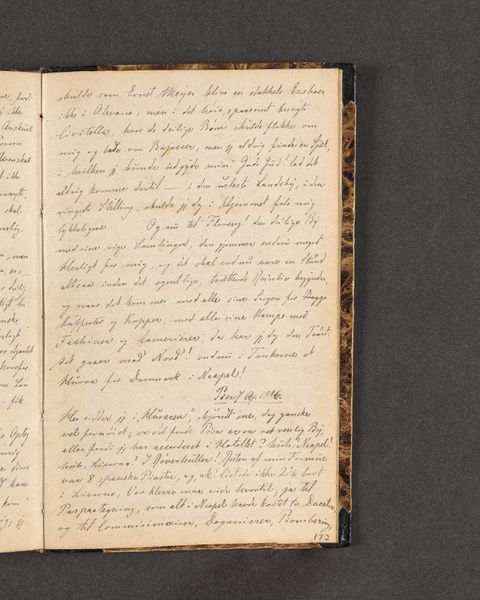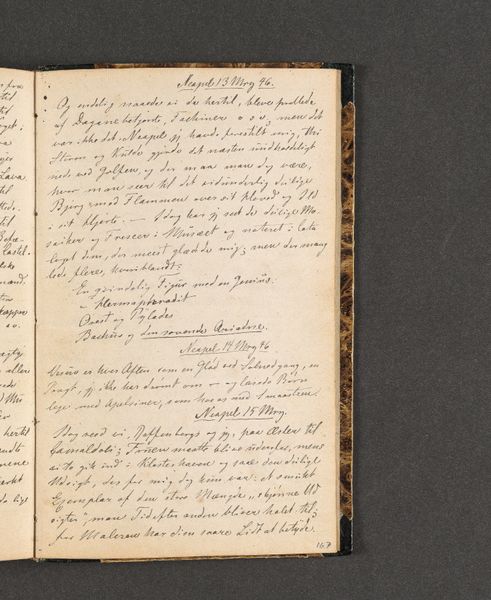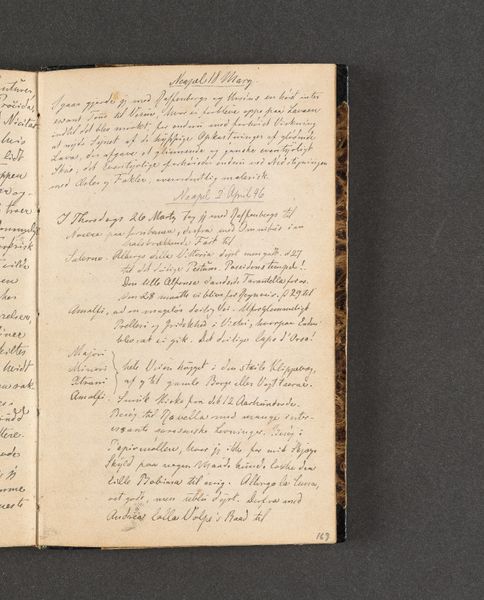
drawing, paper
#
drawing
#
paper
Dimensions: 161 mm (height) x 103 mm (width) x 11 mm (depth) (monteringsmaal)
Curator: Today, we are looking at “Rejsedagbog,” or “Travel Journal,” by Johan Thomas Lundbye, dating from 1845 to 1846. This work, held at the SMK, is rendered in drawing on paper. Editor: It looks so intimate! A peek into the artist's personal thoughts, not meant for public consumption, I guess. All that dense text looks kind of imposing, yet also somehow cozy. Curator: Indeed. The journal reveals Lundbye’s observations of artworks and the cultural milieu encountered on his travels. Consider the paper's origin, possibly from a specific mill, reflecting the material resources available to artists at that time. We must think about the labour of creating not just the art, but also the book itself, a collection of different types of labor, essentially. Editor: I am immediately struck by how this format speaks to a particular kind of accessibility. The museum holding such an intimate artifact speaks volumes about changing social attitudes towards an artist's private life. Were journals like these common at the time, and what might that reveal about the artist’s social circles? Curator: Well, sketchbooks were crucial to artistic practice. Lundbye seems to transcribe reflections on artistic style of other artists: he mentions Lucas Cranach the Elder. This process of documentation served as a learning tool, as a catalogue of the artist’s encounters with nature and art and the world at large, and of course, in this case, this object acquired a different status because now it belongs to a prominent museum. Editor: So, turning a personal document into a public object certainly complicates its intended function. The very act of displaying the journal behind glass inevitably shifts its meaning within a contemporary context. The act of artistic consumption that Lundbye transcribes becomes something the contemporary visitor may now reflect about while seeing his journal within an institution like SMK. Curator: Exactly. And let’s think about the politics embedded in this imagery too: in his written notes Lundbye reflects on Madonna figures by Early Renaissance German artist Lucas Cranach. Those kind of observations help him solidify and articulate a personal, individual visual language and vision in relationship with the socio-political environment he operates in. Editor: Looking at "Rejsedagbog" makes you wonder about all the other hidden diaries waiting to be unearthed, waiting for social contexts to evolve enough for their contents to finally be seen as worthy for discussion, reflection. Curator: Absolutely. Thinking about materiality, institutional power and consumption offers some great reflections.
Comments
No comments
Be the first to comment and join the conversation on the ultimate creative platform.
